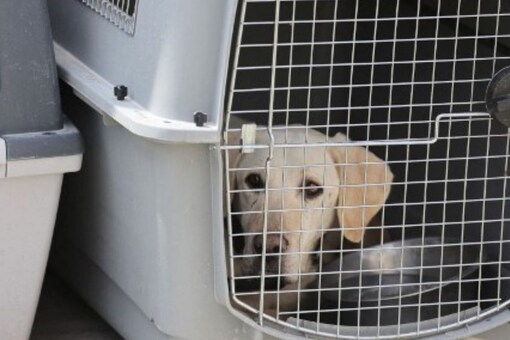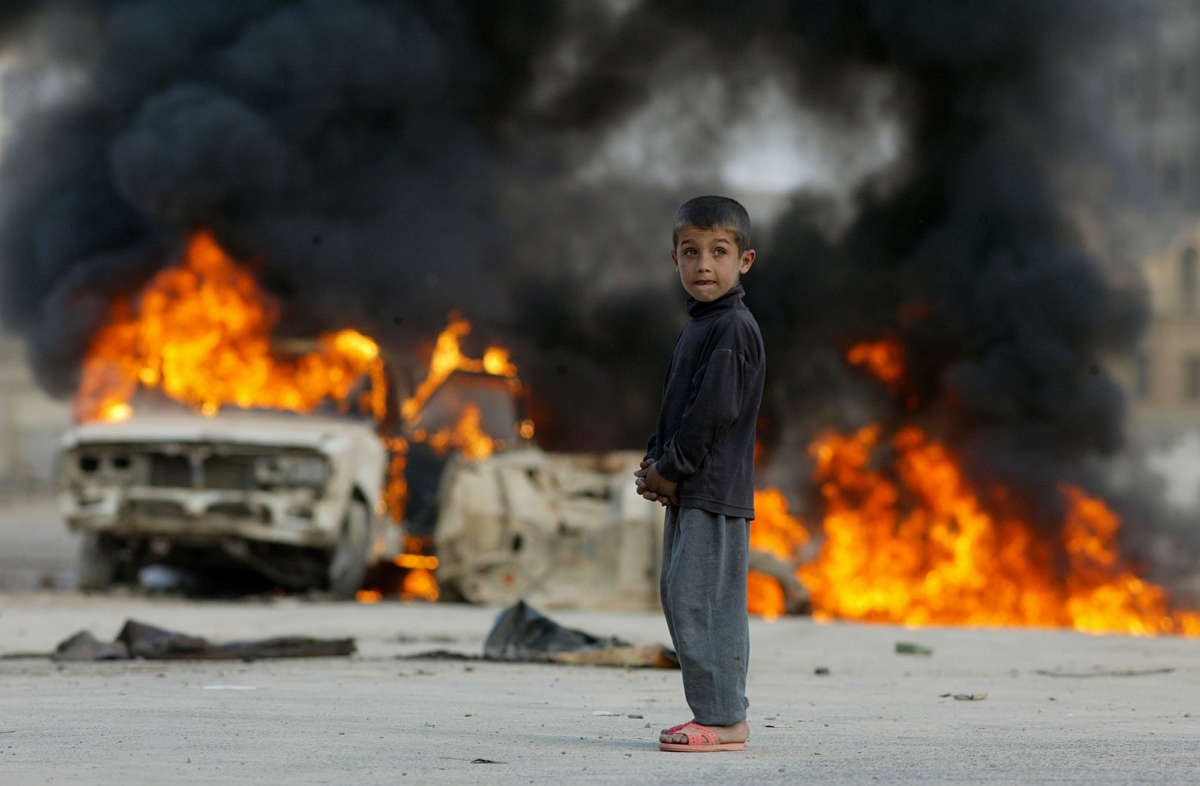Long-secret FBI report reveals new connections between 9/11 hijackers and Saudi religious officials in the US
Pro Publica
September 13, 2021

NYFD Firefighter at Twi Towers site after 9/11 attacks (Photo: pixabay.com)
A long-suppressed FBI report on Saudi Arabia's connections to the 9/11 plot has revealed that Saudi religious officials stationed in the United States had more significant connections to two of the hijackers than has been previously known.
The 2016 report was released late Saturday night under an executive order from President Joe Biden, who promised to make it public no later than the 20th anniversary of the Sept. 11 attacks that killed 2,977 people and injured more than 6,000 others. The 16-page document was a final inventory of circumstantial evidence and leads from the FBI's investigation of Saudi ties to the plot; it was heavily redacted.
Nonetheless, lawyers for families of the 9/11 victims, who are suing the Saudi kingdom in federal court, said the document provided important support to their theory that a handful of Saudis connected to their government worked in concert to assist the first two Qaida hijackers sent to the United States in January 2000.
“This validates what we have been saying," said James Kreindler, one of the attorneys for the plaintiffs. “The FBI agents working this case detailed a Saudi government support network that was working in 1999, 2000 and 2001 to provide the hijackers with everything they needed to mount the attacks — apartments, money, English lessons, flight school."
The Saudi government has always denied any role in the attacks, noting that al-Qaida and its former leader, Osama bin Laden, were sworn enemies of the royal family. But the 2016 report shows that FBI agents found evidence that several Saudi religious officials working in the United States had connections not only to people who assisted the hijackers but also to other Qaida operatives and suspected extremists. At the time, there were many Saudis in the country who had diplomatic credentials but were mainly involved in religious activity. The FBI later investigated many of them for extremism.
The FBI agents investigating possible Saudi involvement in the 9/11 attacks were part of a largely secret second phase of the bureau's examination of the plot, called Operation Encore. The story of that inquiry, and the obstacles it faced, was first revealed last year by ProPublica and The New York Times Magazine.
The report released on Saturday was written by a senior analyst on the Encore team, John Nicholson, after the leader of the FBI's Joint Terrorism Task Force in New York, Carlos Fernandez, decided with federal prosecutors to reassign Nicholson and the rest of his New York team, effectively shutting down their work.
Although the FBI stopped investigating the case, officials said, it kept the Encore file nominally open until earlier this year. The Justice Department repeatedly cited the continuing inquiry as a primary reason why it could not disclose Encore files to families of the 9/11 victims. But relatives of the victims say the U.S. government has maintained a shield of secrecy to protect the Saudi kingdom from embarrassing revelations.
“There is no reason this shouldn't be brought to light," said Christopher Ganci, a battalion chief in the New York Fire Department, whose father, Peter, was the highest-ranking fire official to die in the attacks. “The American people deserve to know this information. The ground troops, the FBI agents on the street, have been chomping at the bit to have this come out. It's been so frustrating for them and for us."
Among the pieces of new evidence cited in the 2016 report are telephone records showing that a Saudi graduate student who helped the two first hijackers to settle in San Diego was in contact with a Saudi religious official stationed in the United States, who in turn had connections to other Qaida operatives and later became a target of a new investigation.
The Saudi student, Omar al-Bayoumi, was a middle-aged man who rarely attended classes and was being paid surreptitiously by the Saudi Defense Ministry, where he had previously worked. Starting in 1998, the FBI had investigated him for suspected extremist activity, but that inquiry was inconclusive.
An FBI official who was a case agent for the bureau's initial investigation of the attacks, Jacqueline Maguire, testified to the bipartisan 9/11 Commission in 2004 that “by all indications" Bayoumi's first meeting with the hijackers “was a random encounter." Maguire and other FBI officials have described Bayoumi as an unwitting accomplice.
But the Encore team came to believe that Bayoumi not only gave extensive help to the two Qaida operatives, Nawaf al-Hazmi and Khalid al-Mihdhar, but later lied about his dealings with them and others.
Although Mihdhar and Hazmi were seasoned Qaida operatives, they spoke virtually no English, could not read street signs and were unable to navigate around the United States without considerable help, people who knew them told investigators. The Encore team believed that a support network of Saudi officials and other extremists in Southern California mobilized before their arrival in Los Angeles on Jan. 15, 2000.
Witness testimony in the 2016 report provides the strongest evidence yet that on Feb. 1, 2000, Bayoumi went directly from a meeting at the Saudi Consulate in Los Angeles to a nearby cafe, where he waited for Hazmi and Mihdhar, approached them when they arrived and then spent about half an hour speaking with them.
Another witness, who appears to be a former Yemeni student in Los Angeles, told the FBI that a friend of his was tasked with helping the hijackers by a Saudi imam assigned to the Saudi Consulate, Fahad al-Thumairy. The FBI report quotes the witness as saying his friend, an Eritrean worshipper at Thumairy's mosque named Mohammed Johar, was instructed to take the two hijackers to the cafe where they met Bayoumi.
In interviews through his lawyer with ProPublica and in his statements to the FBI, Johar denied having been asked by Thumairy to assist the hijackers as well as allegations that he provided lodging for them at Thumairy's direction. According to the 2016 report, he said that a few days after the lunch meeting, he took Hazmi and Mihdhar to a Greyhound station to catch a bus to San Diego. They were met there by Bayoumi, who found them an apartment in his building, loaned them money to rent it, helped them arrange English classes and flying lessons, and introduced them to a circle of other Muslims, including the future Qaida cleric Anwar al-Awlaki.
FBI officials had previously described Bayoumi as having been in close telephone contact with Thumairy, the Saudi imam and consular official in Los Angeles. The 2016 report reveals that Thumairy was also in telephone contact with the family home in Saudi Arabia of two Qaida militants, Suleyman and Abd al Aziz Al-Khalidi, who were later captured in Afghanistan and sent to the U.S. detention camp at Guantanamo Bay, Cuba. The detainees' older brother, Issa, was killed by Saudi forces during the 2004 kidnapping of an American worker in Saudi Arabia, Paul Johnson, who was beheaded by his captors.
According to the 2016 report, Thumairy also had telephone contacts with some alleged Muslim extremists in Los Angeles who were suspected of helping Ahmed Ressam, an Algerian who was captured by U.S. border agents as he tried to cross from Canada on his way to bomb Los Angeles International Airport in late 1999. It is not clear if the FBI determined the extent of those suspected connections.
The FBI investigated Thumairy after the attacks, and the State Department withdrew his diplomatic visa on the suspicion that he led a radical Islamist faction at the King Fahad Mosque in the Los Angeles suburb of Culver City. He was deported to Saudi Arabia when he tried to return to Los Angeles in 2003; he has denied knowing the hijackers or supporting militant causes. Investigators for the 9/11 Commission concluded that he was not a credible witness.
That 2016 report also cites an intriguing but briefly described report from a source that Thumairy received a telephone call from an unidentified person in Malaysia shortly before Hazmi and Mihdhar flew into Los Angeles International Airport on Jan. 15, 2000.
It has long been known that the CIA had the hijackers under surveillance in Malaysia as they met there with other Qaida operatives early that January, days before leaving for the United States. The CIA then lost the hijackers' trail and neglected for more than 16 months to alert the FBI, even after learning that at least one of them had entered the United States.
The 2016 report also reveals a new layer to Bayoumi's efforts, noting telephone records that show he was in touch with another Saudi religious official, Mutaeb al-Sudairy, who was then assigned to the Saudi Embassy in Washington. Significantly, “Bayoumi called Sudairy five times" during the crucial period when the hijackers met Bayoumi in Los Angeles and he helped them move to San Diego, the report says.
Sudairy, the son of a prominent Saudi family, traveled extensively in the United States as a Muslim missionary for the Saudi Ministry of Islamic Affairs, according to documents and interviews. During this period, the Encore report states that he also spent four months as the roommate of Ziyad Khaleel, a Palestinian-American extremist who was living in Missouri. The FBI investigated Khaleel for terrorism-related activities, including the procurement of a satellite phone for bin Laden, according to court documents and interviews. (Khaleel has since died.)
After the Sept. 11 attacks, an American who knew Sudairy in Missouri reported him to the FBI as a possible extremist. But the Saudi religious official had left the country, and the result of the report is not known.
In 2010, Sudairy caught the FBI's attention again. While examining old phone activity of Bayoumi, an analyst on the Encore team discovered links to Sudairy. Soon afterward, the analyst learned that Sudairy and another official in the religious ministry had recently applied for new U.S. visas to study English at the University of Oklahoma. This was strange because the two Saudis were educated, wealthy officials who had lived and worked in the United States years earlier. Because of their suspected extremist links, agents believed that the plan to study in Oklahoma might be a cover for something more nefarious.
In contrast to other leads developed by the Encore team, FBI leaders took the matter seriously. They authorized an operation to put the two Saudis under full-time surveillance after they landed in the United States, former officials have told ProPublica.
But the episode ended when CIA officers in Riyadh, the Saudi capital, objected strongly to the FBI plan, one former official said. For reasons that remain unclear, the two Saudis canceled the visit at the last minute. Former investigators felt they lost an important opportunity to learn more about the suspected role of Saudi officials in the support network of the Sept. 11 hijackers. The new information about Sudairy raises even more questions about why U.S. authorities were not able to pursue the lead more aggressively in 2010.































